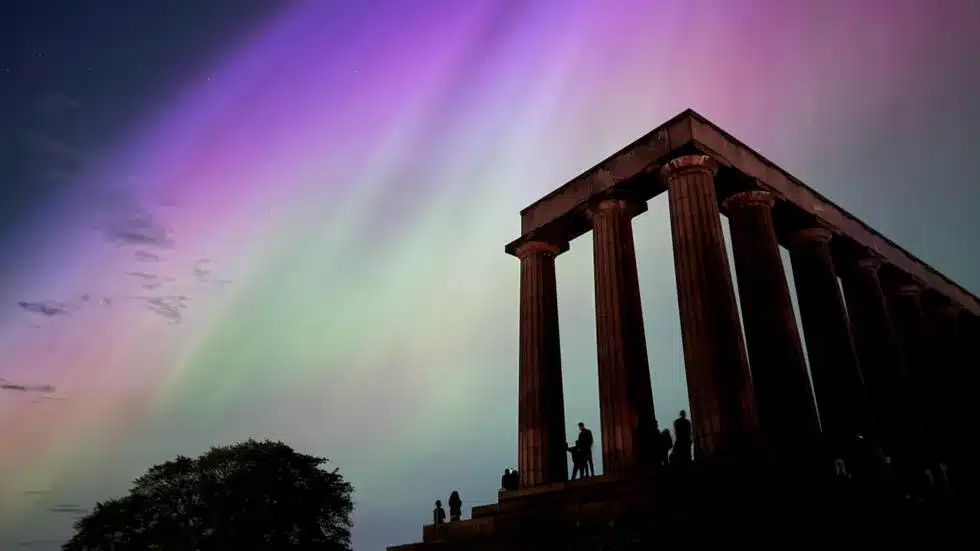About Auroras
- These are essentially natural lights that appear as bright, swirling curtains in the night sky and can be seen in a range of colours, including blue, red, yellow, green, and orange.
- These lights primarily appear near the poles of both the northern and southern hemispheres all year round but sometimes they expand to lower latitudes.
- These are called aurora borealis in the north and in the south, it is known as the aurora australis.
Why do auroras occur?
- It is due to activity on the surface of the Sun.
- The star continuously releases a stream of charged particles, mainly electrons and protons, and magnetic fields called the solar wind.
- As the solar wind approaches the Earth, it is deflected by the planet’s magnetic field, which acts like a protective shield.
- However, some of the charged particles are trapped in the magnetic field and they travel down the magnetic field lines at the north and south poles into the upper atmosphere of the Earth.
- These particles then interact with different gases present there, resulting in tiny flashes that light up the night sky.
- When solar wind particles collide with oxygen, a green colour light is produced. Interaction with nitrogen produces shades of blue and purple.
- Auroras expand to midlatitudes when the solar wind is extremely strong.
- This happens when the activity on the Sun’s surface goes up, leading to solar flares and coronal mass ejections (CMEs), which are essentially extra bursts of energy in the solar wind.
- In such cases, the solar wind is so intense that it can result in a geomagnetic storm, also known as a magnetic storm — a temporary disturbance of the Earth’s magnetic field. It is during a magnetic storm that auroras can be seen in the mid-latitudes.
Q1: What is a Solar flare?
It is an intense burst of radiation coming from the release of magnetic energy associated with sunspots. Flares are our solar system’s largest explosive events.
Source: What are northern and southern lights? Why do they occur?
Last updated on June, 2025
→ UPSC Notification 2025 was released on 22nd January 2025.
→ UPSC Prelims Result 2025 is out now for the CSE held on 25 May 2025.
→ UPSC Prelims Question Paper 2025 and Unofficial Prelims Answer Key 2025 are available now.
→ UPSC Calendar 2026 is released on 15th May, 2025.
→ The UPSC Vacancy 2025 were released 1129, out of which 979 were for UPSC CSE and remaining 150 are for UPSC IFoS.
→ UPSC Mains 2025 will be conducted on 22nd August 2025.
→ UPSC Prelims 2026 will be conducted on 24th May, 2026 & UPSC Mains 2026 will be conducted on 21st August 2026.
→ The UPSC Selection Process is of 3 stages-Prelims, Mains and Interview.
→ UPSC Result 2024 is released with latest UPSC Marksheet 2024. Check Now!
→ UPSC Toppers List 2024 is released now. Shakti Dubey is UPSC AIR 1 2024 Topper.
→ Also check Best IAS Coaching in Delhi
























